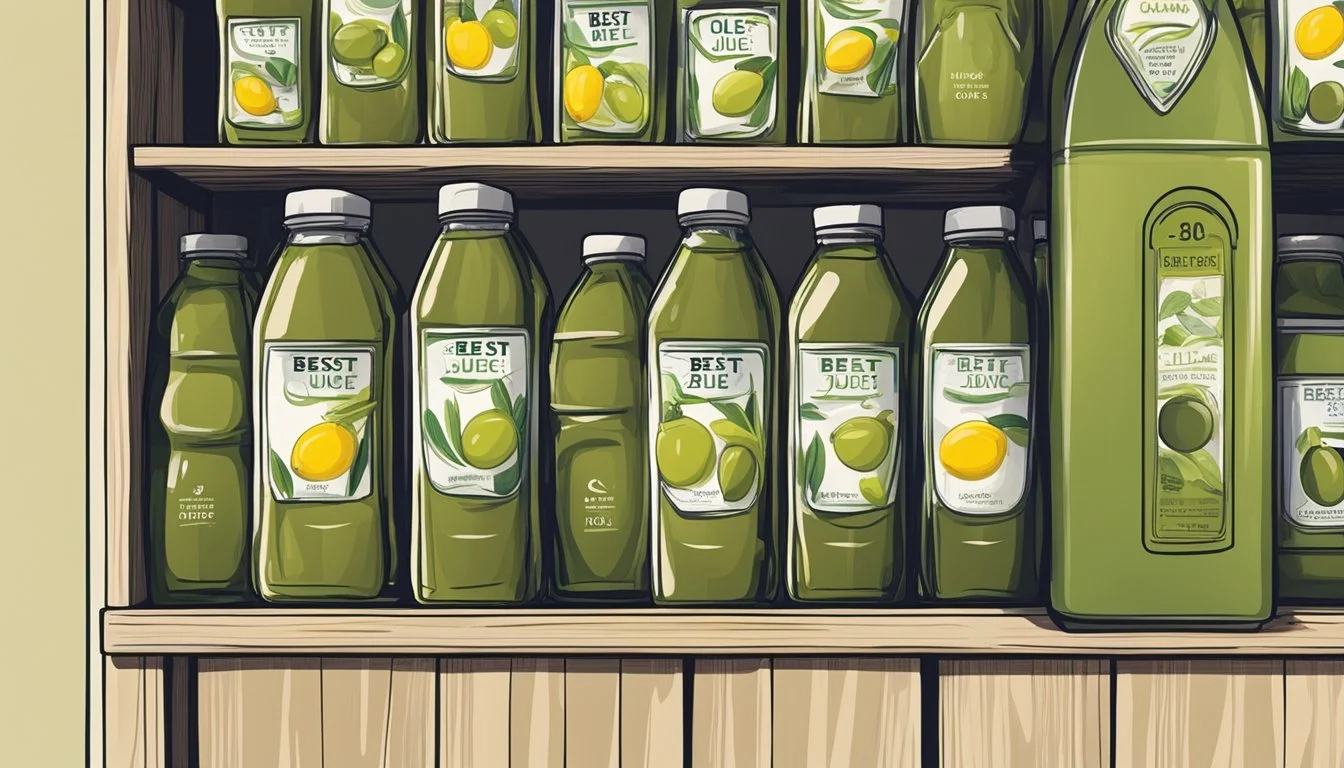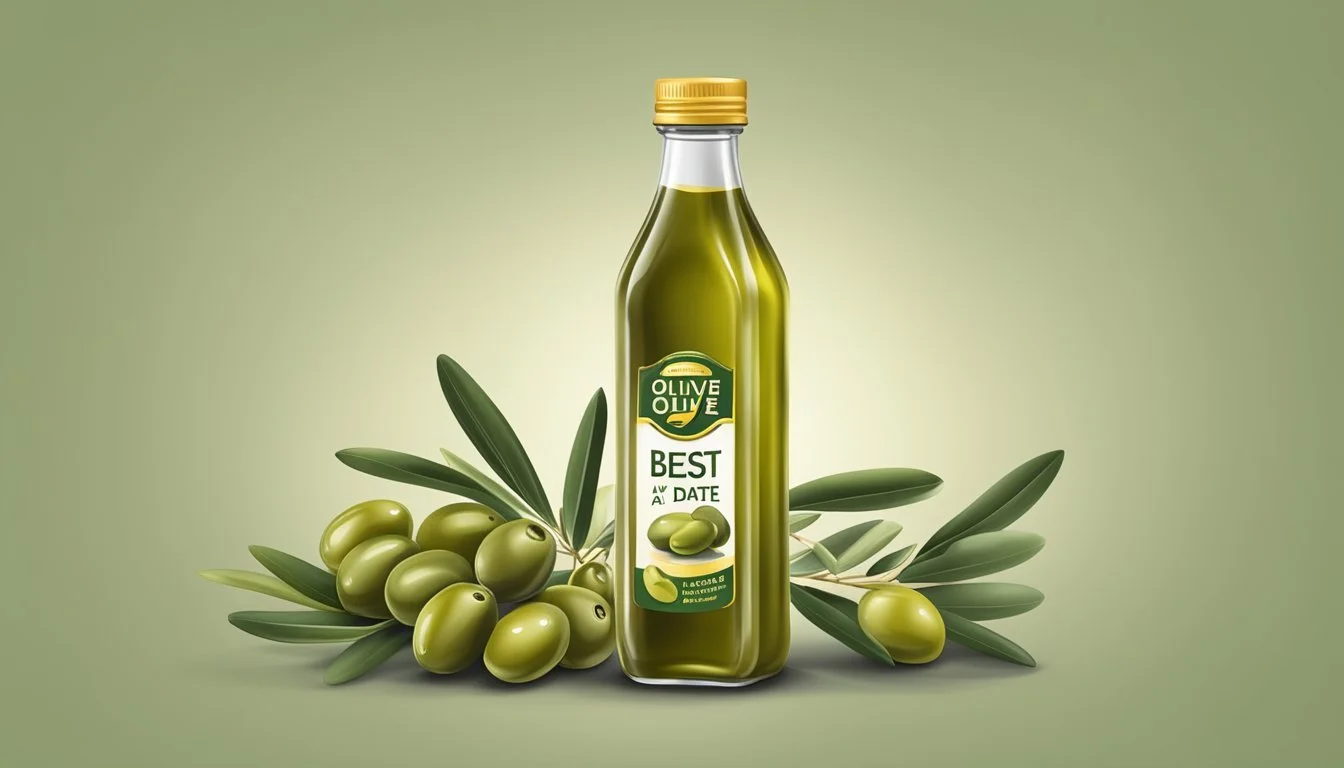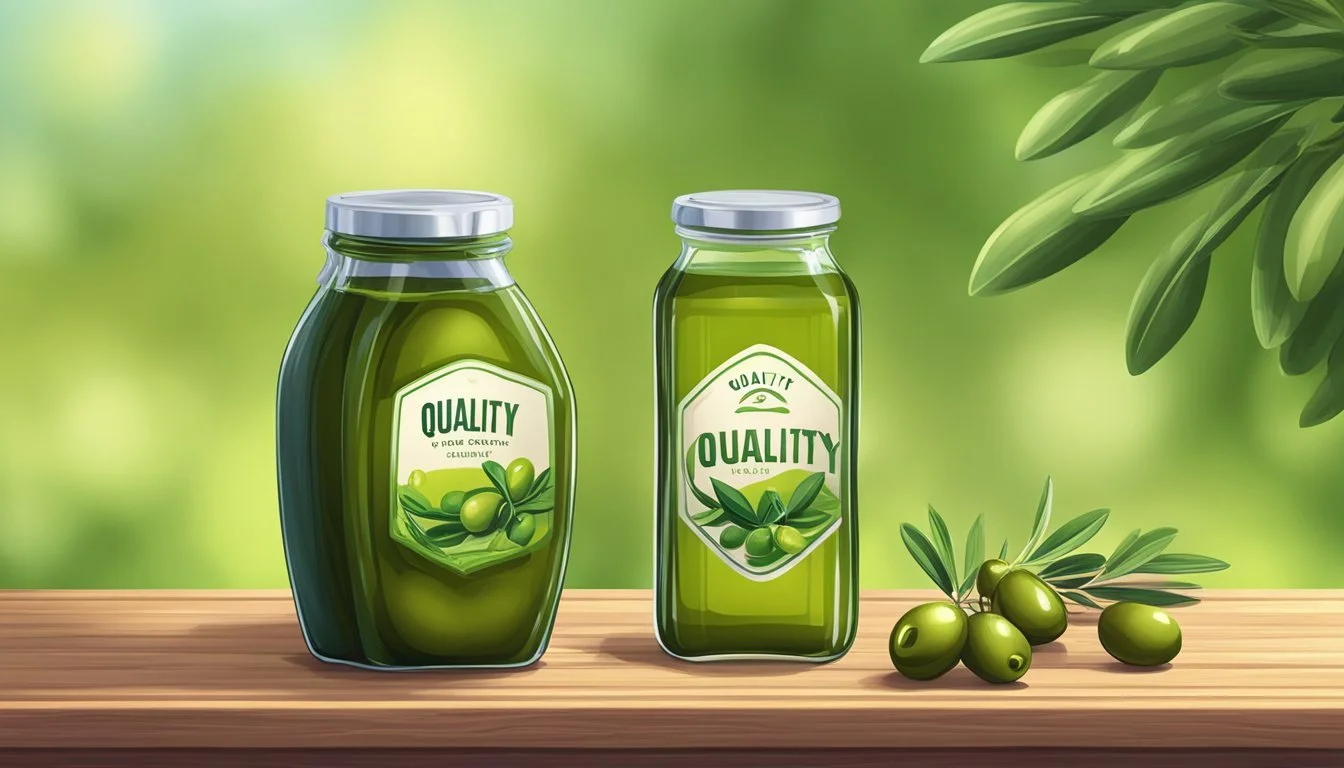Does Olive Juice Go Bad?
Understanding Shelf Life and Storage Tips
Olive juice, often referred to as olive brine, is the liquid that olives (What wine goes well with olives?) are submerged in within jars and cans. This liquid is a mixture of water, salt, and sometimes vinegar and other preservatives which help in maintaining the freshness and flavor of the olives. While it's a common belief that this saline solution can last indefinitely due to its high salt content, olive juice does in fact have a shelf life and can go bad. Proper storage is crucial to extend its usability and ensure it remains safe for consumption.
The key to keeping olive juice fresh is proper refrigeration after opening. When stored in a cool, dark place, ideally in the refrigerator, an opened container of olive juice can remain fresh for a considerable period. However, the length of time it will stay good depends on a variety of factors including the initial quality of the olives, the concentration of salt in the brine, and the presence of preservatives.
There are certain indicators one should watch for that signify spoilage in olive juice. These include an off smell, a cloudy appearance, or the presence of mold. Consuming spoiled olive juice could be harmful, so it's important for consumers to be aware of these signs. Freshly made olive juice has a clear to slightly opaque appearance and a salty, distinctive olive flavor, and any deviation from this might suggest that it's time to discard the product.
Understanding Olive Juice
In the context of culinary practices and healthy diets, olive juice is often mentioned for its unique flavor and potential health benefits. Understanding its composition, nutritional content, culinary uses, and the various types that appear in cuisine is essential.
Composition and Varieties
Olive juice mainly consists of water, olive oil, and other components released from olives during the brining process. Specifically, this liquid contains salt, vinegar, and a mixture of olive flavors that can include brine or oil, depending on the preparation method. There are generally two types of packaged olives that contribute to the juice: liquid-packed and dry-packed, with liquid-packed offering more juice. The varieties of olive juice can differ based on the type of olive used, ranging from the green Spanish Manzanilla to the dark Kalamata olives frequently found in Mediterranean cuisine.
Nutritional Value
Olive juice is known for its high content of monounsaturated fats, particularly oleic acid, which is beneficial for heart health. It is also a source of antioxidants such as vitamin E and polyphenols. Although it can contribute to a balanced diet when consumed in moderation, olive juice is high in sodium, which necessitates careful consumption, especially for individuals monitoring their salt intake.
Culinary Uses
In cooking, olive juice is a prized ingredient for its ability to enhance flavors, especially in Mediterranean dishes like pasta, salads, and pizza. It is also a common component in salad dressings, pasta sauces, and soups. Beyond main courses, olive juice can be used in deli items or to add a punch of flavor to drinks like the famous Martini cocktail.
Popular Types in Cuisine
Olive juice as an ingredient appears in various forms within Mediterranean diet staples:
Jarred Olives: Common in home kitchens, brine from jarred olives is often added to salad dressings and marinades.
Canned Olives: Typically found in pasta sauces and soups, the juice from canned olives imparts a rich, savory flavor.
Brine: Pure olive brine is sometimes used as a flavor enhancer in restaurant settings for complex dishes.
By integrating into diverse culinary applications, olive juice demonstrates its versatility and contribution to the flavorful profiles typical of Mediterranean and balanced diets alike.
Shelf Life and Spoilage
When it comes to olive juice, its longevity and freshness are influenced by proper storage and awareness of spoilage indicators. Ensuring olive juice remains palatable involves adhering to expiration dates and recognizing when it has gone bad.
Expiration and Shelf Life
Olive juice can have a varied shelf life, largely depending on whether the container has been opened. An unopened container of olive juice typically has a shelf life of 1-2 years when stored in a cool, dark place. Once opened, olive juice should be kept refrigerated and ideally consumed within 1-2 weeks. The expiration date on the packaging serves as the manufacturer's guarantee of optimal quality and food safety; therefore, it's advisable to consume the juice prior to this date.
Signs of Spoilage
Olive juice can exhibit several signs of spoilage that consumers should be aware of:
Appearance: Any discoloration or cloudiness can be a sign that the juice is no longer fresh.
Smell: A sour or off-smell is a clear indication of spoilage.
Mold: The presence of mold on the surface or underneath the cap is an unmistakable sign that olive juice has gone bad and should not be consumed.
Taste: A noticeable change in flavor might suggest that the juice is starting to spoil.
Factors Affecting Freshness
Several factors can impact the freshness of olive juice:
Temperature: Keeping olive juice at a consistent, cool temperature is crucial to prolong its shelf life.
Airtight container: After opening, transferring olive juice to an airtight container can minimize the risk of contamination and extend freshness.
Moisture and Light: Storing away from direct light and in a place with minimal moisture is recommended as these conditions can accelerate spoilage.
Storage conditions: Consistency in storage conditions, including temperature and exposure to air, plays a significant role in maintaining the quality of olive juice.
Storage Recommendations
Proper storage of olive juice is crucial for maintaining its quality and safety. The recommendations outlined here aim to maximize shelf life while keeping the olive juice in good condition.
Proper Storage Methods
Olive juice should be stored in a cool, dark place such as a pantry or cupboard, away from direct sunlight and heat sources. Once opened, it's essential to keep the juice in an airtight container to prevent oxidation and contamination. For best results, storing the opened container in the fridge is recommended to further retard spoilage.
Extending Shelf Life
To extend the shelf life of olive juice, one might consider freezing it. Although not common, freezing olive juice in a vacuum-sealed bag or container can prevent spoilage for a longer period. It's important to note that freezing may alter the flavor profile slightly, so it may be best suited for use in cooked dishes rather than as a table condiment.
Handling and Packaging
Proper handling is also key in preserving olive juice. One should always use clean utensils when serving to avoid introducing contaminants. In terms of packaging, olive juice often comes in glass jars or plastic containers; ensure these are always sealed tightly after each use. If the original packaging is damaged, transferring the juice to a new, clean, and airtight container can prevent early spoilage.
Health and Safety Considerations
When discussing olive juice, it's crucial to understand both the risks of spoiled juice and the nutritional benefits it may offer when consumed responsibly as part of a balanced diet.
Potential Health Risks
Contamination: Olive juice can attract bacteria and yeast, leading to spoilage. Spoiled olive juice often reveals itself through a sour or vinegary taste, changes in color, or an unpleasant odor. A bulging lid on a jar is a clear indicator of gas produced by bacteria, and such products should not be consumed due to the risk of foodborne illness.
Food Safety: To guard against potential health risks, it's essential to adhere to food safety practices. This includes storing olive juice in a cool, dark place and refrigerating after opening. One should always respect the expiration date to avoid the hazards of bacteria growth, as these organisms can proliferate in the juice over time, posing a health threat.
Benefits in a Balanced Diet
Nutrition: Olive juice contains antioxidants that can help reduce inflammation in the body, potentially lowering the risk of chronic conditions such as heart disease, diabetes, and cancer.
Heart Health: The monounsaturated fats found in olive juice are considered heart-healthy fats. When consumed in moderation, these can support heart health and may contribute to maintaining healthy blood pressure levels.
Consumption of olive juice should be balanced, as it is high in sodium, which could correlate with high blood pressure if taken in excess. Including olive juice as part of a nutritionally diverse diet can be advantageous when one eats a variety of foods to support their overall health.
Creative Uses and Flavors
Olive juice, with its salty and tangy profile, is a versatile ingredient that can elevate a variety of dishes and drinks. Its distinctive flavor can be the secret ingredient that adds both complexity and a hint of unexpected taste.
Enhancing Dishes with Olive Juice
Olive juice imparts a unique combination of salty and mild tanginess that can enhance the overall flavor of numerous dishes. It can serve as a flavor booster in sauces such as pizza sauce, adding depth with a gentle nudge towards more nuanced tastes. The injection of this briny liquid can turn a bland marinara into a more flavorful sauce, with hints of spices and even delicate sweetness that complements the tomato base.
Example Dishes Enhanced by Olive Juice:
Pizza Sauce: A tablespoon of olive juice adds a salty, aromatic kick.
Salad Dressings: Olive juice can be whisked into vinaigrettes for extra flavor.
Cocktails and Beverages
Cocktails like the classic dirty martini owe their savory punch to olive juice. The brine complements the clear, sharp notes of gin or vodka and the herbal whisper of dry vermouth, creating a cocktail with body and character. For non-alcoholic options, olive juice mixed with carbonated water produces a sophisticated faux martini—distinctive in its savory profile.
Cocktail Recipe: Dirty Martini
2 1/2 ounces gin or vodka
1/2 ounce dry vermouth
1/2 ounce olive juice
Garnish with an olive
Infusions and Marinades
Marinating meats in olive brine infuses them with a savory quality, adding not just saltiness but also the subtle flavors of any included spices, garlic, or citrus. This method works well with pork chops, which emerge juicy and tender from the brine. Olive juice can also add complexity to infusions, introducing a briny note to olive oils or vinegars that are perfect for cooking and dressings.
Marinade Suggestion:
Pork Chops: Marinate in olive brine for 2-3 hours for enhanced texture and taste.
Recognizing Quality and Freshness
When assessing olive juice, it's crucial to discern its sensory attributes such as flavor, texture, and odor to ensure freshness. Quality olive juice should taste characteristically salty with the pleasant aroma of olives, and the liquid's appearance should be clear of mold. The following sub-sections provide specific details on assessing the juice itself and selecting reputable brands that consistently deliver premium quality.
Assessment of Olive Juice
The quality and freshness of olive juice can be determined through a multifaceted assessment involving its appearance, smell, taste, and texture.
Appearance: Fresh olive juice should be clear and free from any visible mold. A discoloration or cloudy appearance often indicates spoilage.
Smell: The scent of olive juice must be akin to the olives from which it is derived, without any rancid or putrid notes. An off-putting smell is a clear sign the juice has gone bad.
Taste: The flavor should mirror the briny, savory profile of the olives, without any overpowering bitterness or sourness.
Texture: Fresh olive juice should not feel slimy upon sipping; it typically has a smooth flow, with viscosity similar to that of water.
The presence of Vitamin E and iron are indications of the olive juice’s quality but do not prominently affect taste or appearance.
Selecting Premium Brands
Choosing the right brand is instrumental for ensuring a consistently high quality of olive juice:
Brand Reputation: Research brands and lean towards those with positive reviews and a history of quality products.
Ingredient Sourcing: Premium brands often highlight the origin of their olives, ensuring they are picked at peak freshness to maximize the flavor and the nutritional content of the juice.
By following these measures, consumers can make informed decisions when selecting olive juice, thus enjoying the robust flavor and the benefits of this unique condiment at its peak quality.
Frequently Asked Questions
This section addresses common inquiries regarding the longevity, culinary uses, and spoilage indicators of olive juice to inform consumers about proper storage and consumption.
Do Olives and Olive Juice Expire?
Olive juice, much like the olives it originates from, does indeed have an expiration date. While both items have a generous shelf-life, it is crucial to note that their preservative qualities don't make them immune to spoilage. When unopened, olive juice can be stored at room temperature but, once opened, should be refrigerated to extend its freshness. Olives, on the other hand, should remain in their brine and be refrigerated after opening. Paying close attention to expiration dates and storage instructions can prevent the consumption of olive products that have gone bad.
Can Olive Juice be Used in Cooking?
Certainly, olive juice can be an aromatic addition to various dishes. Its robust flavor makes it a secret ingredient in enhancing pasta, pizza, salads, and soups. When using olive juice in cooking, moderation is key due to its intense flavor and salt content.
What are the Signs of Bad Olive Juice?
Olive juice that has gone bad will often exhibit mold, discoloration, or a rancid smell. Upon noticing any of these signs, it is advised to discard the juice, as these are clear indicators of spoilage. Regular inspection of olive juice, especially after the expiration date is nearing, is essential to ensure safety and quality.









